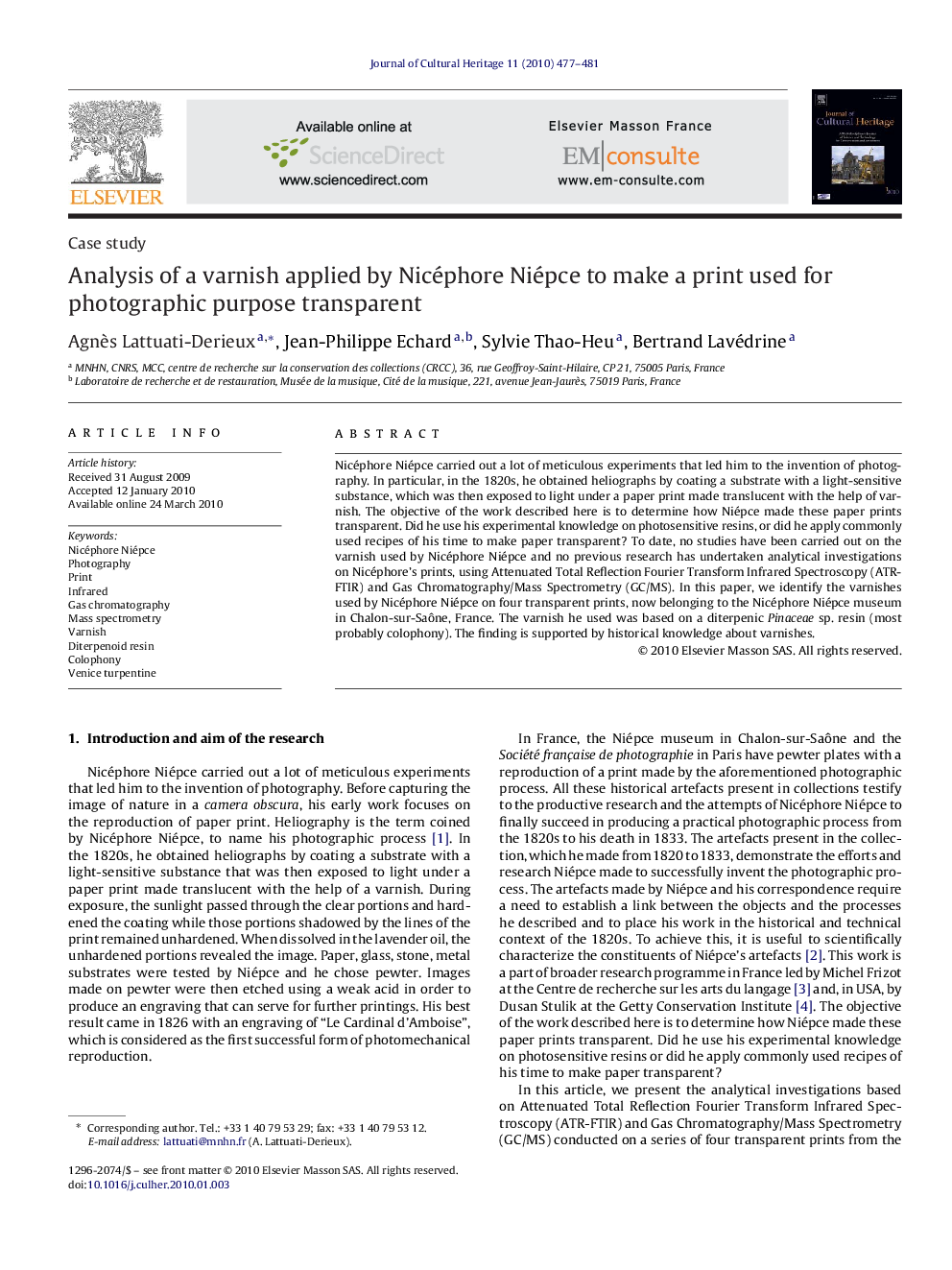| Article ID | Journal | Published Year | Pages | File Type |
|---|---|---|---|---|
| 1038568 | Journal of Cultural Heritage | 2010 | 5 Pages |
Nicéphore Niépce carried out a lot of meticulous experiments that led him to the invention of photography. In particular, in the 1820s, he obtained heliographs by coating a substrate with a light-sensitive substance, which was then exposed to light under a paper print made translucent with the help of varnish. The objective of the work described here is to determine how Niépce made these paper prints transparent. Did he use his experimental knowledge on photosensitive resins, or did he apply commonly used recipes of his time to make paper transparent? To date, no studies have been carried out on the varnish used by Nicéphore Niépce and no previous research has undertaken analytical investigations on Nicéphore's prints, using Attenuated Total Reflection Fourier Transform Infrared Spectroscopy (ATR-FTIR) and Gas Chromatography/Mass Spectrometry (GC/MS). In this paper, we identify the varnishes used by Nicéphore Niépce on four transparent prints, now belonging to the Nicéphore Niépce museum in Chalon-sur-Saône, France. The varnish he used was based on a diterpenic Pinaceae sp. resin (most probably colophony). The finding is supported by historical knowledge about varnishes.
